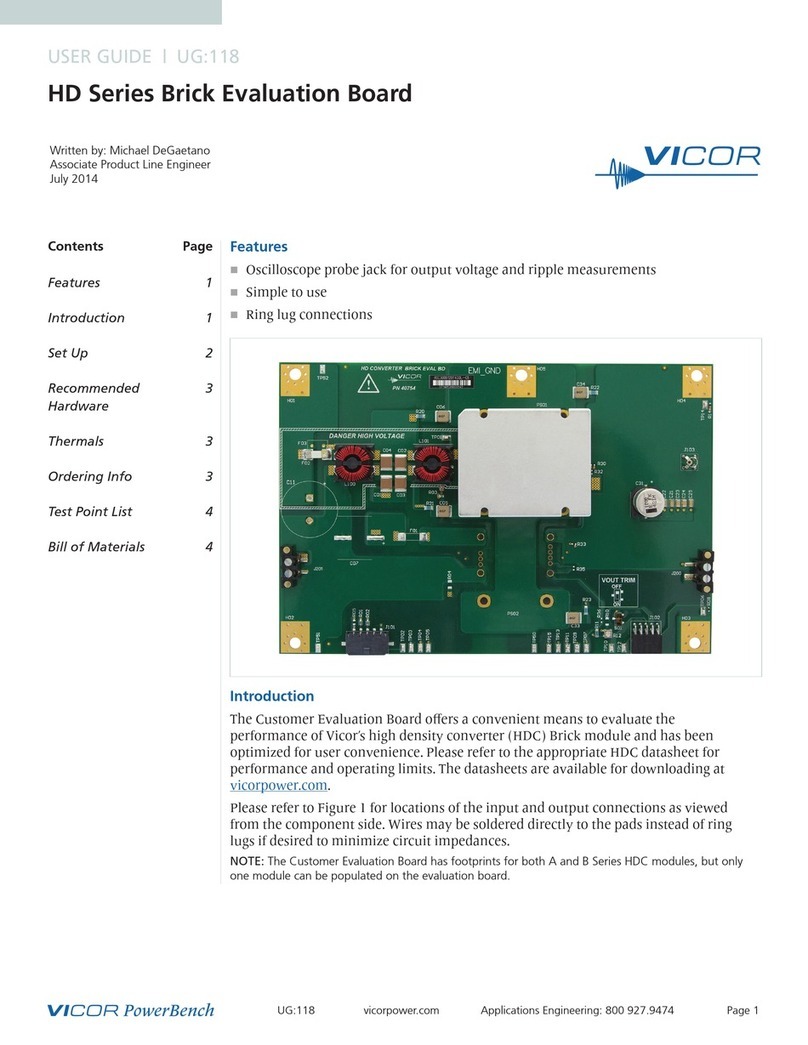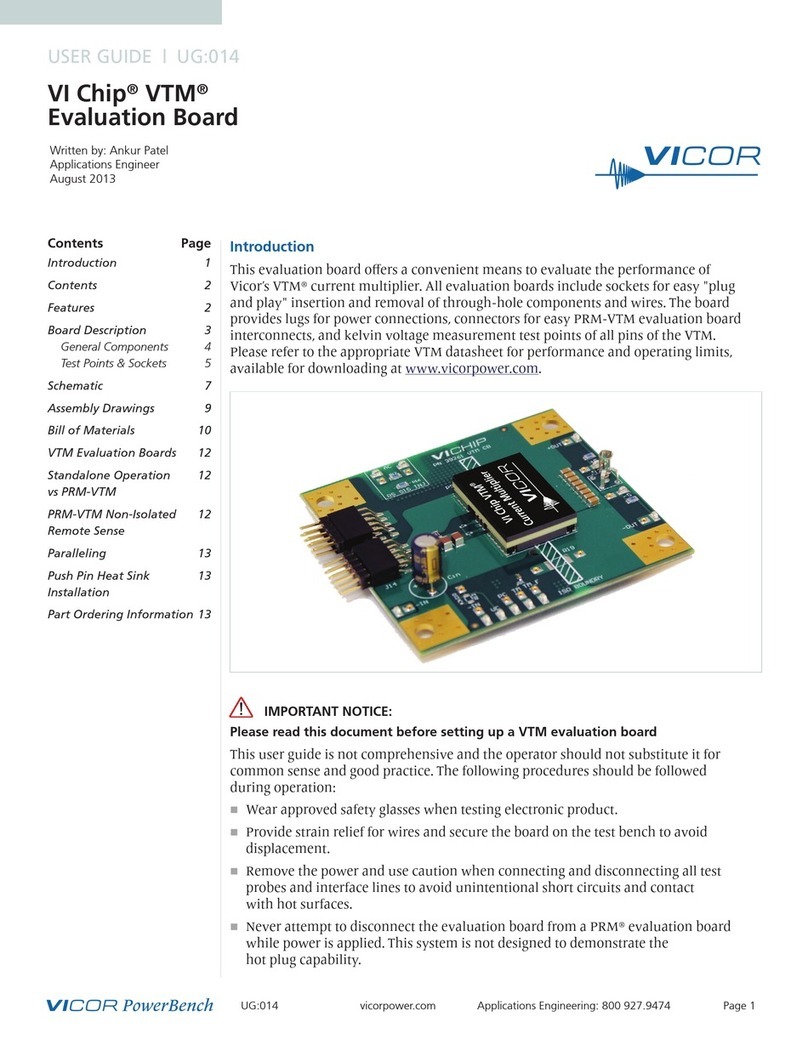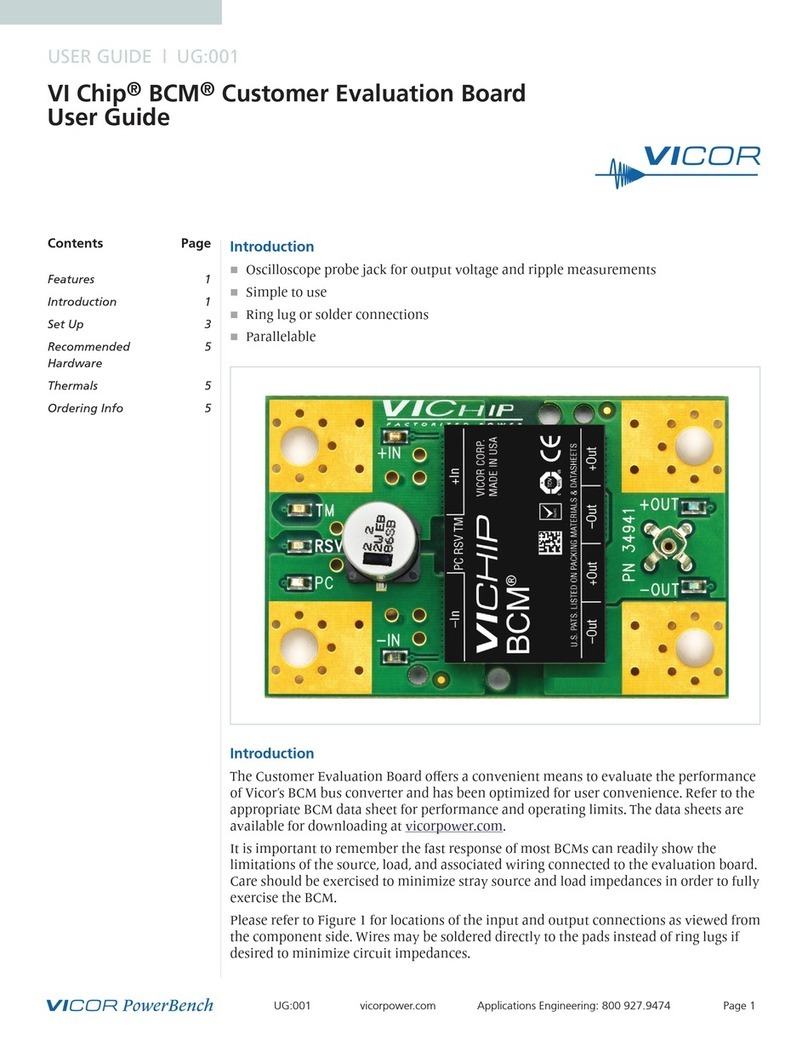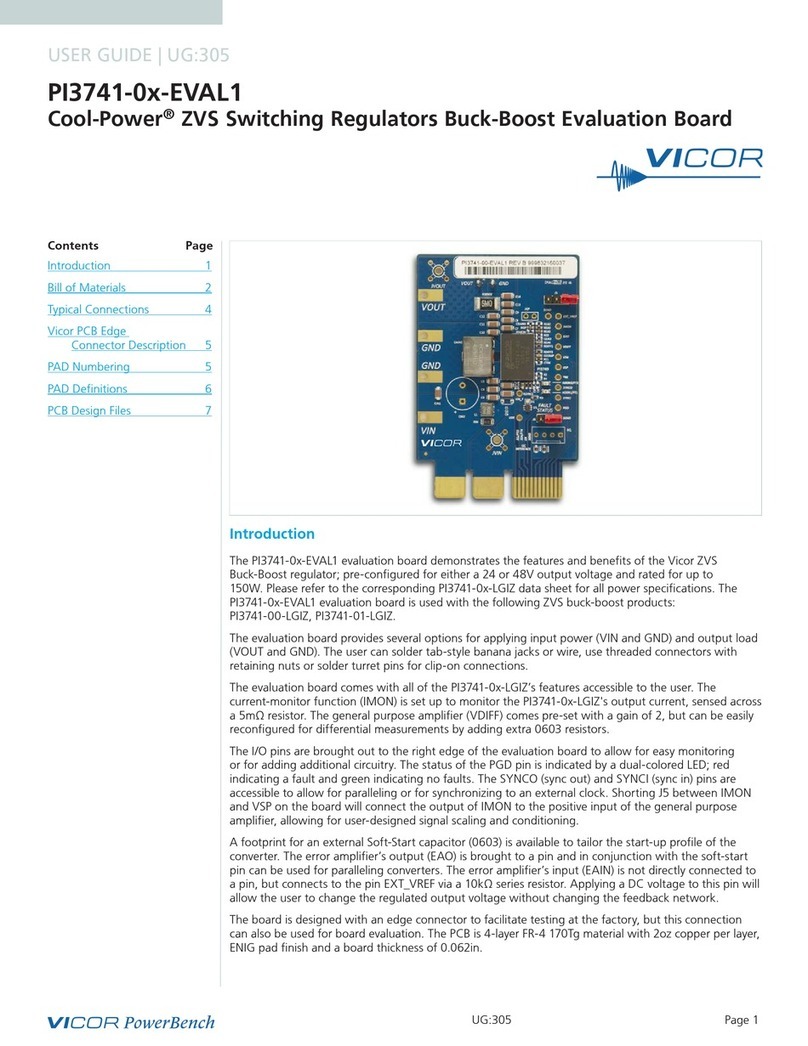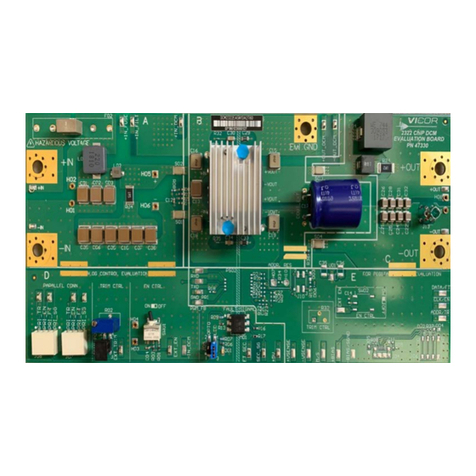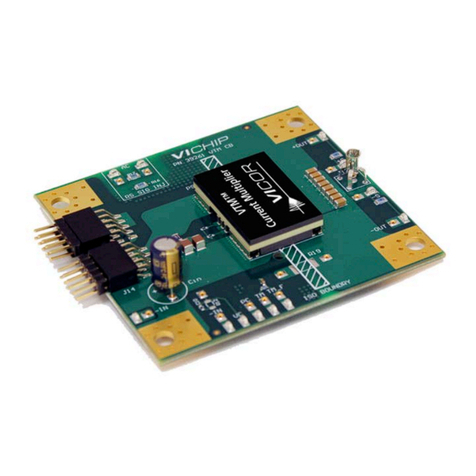
UG:307 vicorpower.com Applications Engineering: 800 927.9474 Page 7
6. Loop compensation mode selection (S202): Used to select one of the following:
Local Sense (LS): default. Single ended feedback loop using the internal to the regulator
operational transconductance amplifier. +VOUT Lug is the local sensed location. +VOUT lug is
connected to the Error Amplifier Inverting Input (EAIN) through a voltage divider network.
Remote Sense (RS): Non-isolated remote sensing option using the internal to the regulator
independent differential amplifier which outputs (VDIFF) is in turn connected to the
transconductance amplifier input (EAIN) pin. Remote sensing is achieved using +VRS and –VRS
test points. Resistors R223 and R224 are 100Ωcatch resistor placed to prevent an open loop
condition if accidentally switched to this mode.
7. Trim mode selection (S201 or S203): Switch (S201) and trim potentiometer (R206) are associated
with local sense loop while switch (S203) and trim potentiometer (R221) are associated with remote
sense selection. Both Switches (S201 and S203) provide the following trim modes:
Fixed Trim (FIXED): default. Fixed resistor divider is used to set regulator output to the nominal
datasheet output voltage.
Adjustable Trim (ADJ): selection allows the use of trim potentiometer (R206 or R221) to
exercise the full output voltage range. Turn counterclockwise to increase the output voltage
and clockwise to decrease the output voltage. The trim potentiometer at either lowest or
highest point can only exercise the voltage range defined in the datasheet as valid operational
range within tolerance limits. If preferred, through-hole receptacles are available to bypass the
potentiometer with external leaded resistor.
8. Header-jumper (J201): Default setting is all three jumper sockets populated. This header provides
the following function:
Pin 1 and pin 2 can be used to inject the isolated signal of a network analyzer through
(R211= 49.9Ω) used for bode plot measurement in order to evaluate the stability in
local sense mode.
Pin 3 and pin 4 are used to short the Lighting (LGH)/Constant Current (CC) Sense Input to
SGND. LGH header pin 4 is used for lighting and constant current type applications. When not
in use the constant current mode (CC mode), the LGH pin should be connected to SGND. Refer
to the product datasheet for availability of this pin function.
Pin 5 and pin 6 can be used to inject the isolated signal of a network analyzer through
(R214 = 49.9Ω) used for bode plot measurement in order to evaluate the stability in remote
sense mode.
9. Soft-start capacitor (C123): Capacitor connected to regulator TRK pin and SGND. The soft-start
time is set with an internal 47nF capacitor to roughly 0.94ms. C123 can be added to further stretch
the soft-start ramp CTRK = (tTRK_DESIRED x 50E-6) – 47E-9 where ITRK = 50µA.
10. Internal operational transconductance amplifier compensation network (C201, R212, C203, C202):
this network provides flexibility during loop compensation design to adjust the compensation.
For the purpose of this evaluation board C201 in series to the internal R(ZI) of 5kΩis used.
The maximum mid-band gain that can be achieved when using the internal R(ZI) is roughly
(20•log(R(ZI)•gm•VREF/VOUT_SET). With a reference voltage of 0.99V and output voltage of 5V max
midband gain is ~14dB. R212 + R(ZI) and C203 in series can be used to further increase the mid-
band gain. C202 can be used to lower the high frequency pole if desired. The high frequency pole
is set internally to ~1.7Mhz using a C(HF) = 56pF.
11. Output lugs: Sized for #10 hardware. Use these lugs to connect the output directly to the load.
12. Output oscilloscope probe Jack (J102): Used for making accurate scope measurements of the
output voltage (e.g. ripple). The jack is directly compatible with many common passive voltage
probes models. Remove the grounding lead and insulating barrel of the probe and insert the probe
tip and barrel directly into the jack, ensuring that the probe tip sits in the center socket of the jack.
To avoid the risk of an inadvertent short circuit, do not attempt to install while power is applied.
This Johnson Jack is kelvin connected to C113 positive pin.
13. Output filter: 12x 47µF output ceramic capacitors 1210 (C111- C122). Is used to achieve <1.5% of
VOUT peak to peak ripple.
